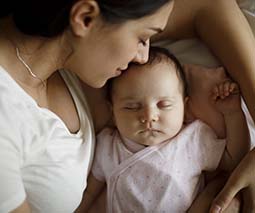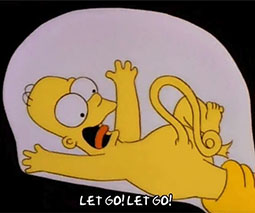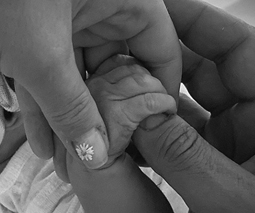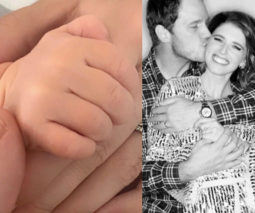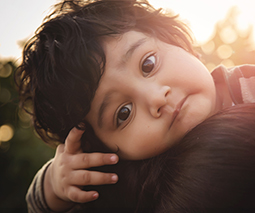New mums shouldn’t have to ask: “Why didn’t anyone tell me this could happen?”

Childbirth gives you the greatest gift imaginable but it also leaves around 37 percent of mums with a few gifts they’d prefer to return; and if you’re afraid to sneeze and jump in public, you know exactly what we’re talking about.
Incontinence is just the tip of the iceberg, with organ prolapse, back pain and perineal tears also making life post-birth difficult for mums, especially if left untreated.
According to Heba Shaheed, pelvic floor physiotherapist and co-founder of The Pelvic Expert, care providers are failing to prepare women for the health problems they face during and after pregnancy.
Incontinence, prolapse, diastasis recti, oh my!
“Stress incontinence, which is leaking when coughing or sneezing is quite common,” Shaheed tells Babyology. “There’s also urgency incontinence, when women are busting to go and they can’t make it to the toilet in time.
“Related to that is pelvic organ prolapse, when the bladder, bowel or uterus sag lower in the pelvis because the connective tissue gets overstretched during pregnancy.”
The last piece in the superfecta of pelvic floor-related pregnancy injuries is abdominal separation, or diastasis recti. By the end of pregnancy, all women will have it.
But that palpable gap between your abdominal muscles can persist long after you’ve had your baby. “Almost half of women continue to have abdominal separation six or even 12 months after birth. Some have it even longer,” she says.
The bad news is that these problems are directly linked with pregnancy and vaginal birth. The good news is that with the right care, we don’t have to live with them.
Why do these problems occur?
Understanding why women suffer from birth injury and problems post-pregnancy calls for an anatomy lesson.
“Picture a room with three big balls suspended by elastic bands,” says Shaheed. “The bands run from the ceiling, the walls and between each ball.”
The balls represent your bladder, uterus and rectum, and the elastic bands are the connective tissue.
“The pelvic floor is not just one muscle, but multiple, interconnected muscles that sit like a hammock underneath the organs,” she says. “The muscles connect from the pubic bone to the tailbone, the hip bones to the tailbone and they even wrap around the back of the rectum.
“In pregnancy the weight of the baby in the womb is heavy on the pelvic floor. Over time it fatigues.”
When a woman gives birth, the connective tissue between her organs stretches out, and the individual muscles of the pelvic floor spread apart to make way for the baby.
After so much pushing and stretching, it’s hard for the connective tissue and pelvic floor to spring back.
“Sitting around and doing a few squeezes isn’t enough”
Health care providers deal with these issues by advising women to do Kegels during and after pregnancy.
“Sitting around and doing a few squeezes isn’t enough,” says Shaheed. “The pelvic floor doesn’t work in isolation. It moves and flexes with the buttocks, legs, abs and even the upper body.”
Shaheed advises her patients to strengthen their pelvic floor in functional tasks. “If you bend to pick up your baby, you’re squatting. Squeeze your pelvic floor up while you’re coming out of the squat,” she says.
Shaheed says reconnecting with pelvic floor muscles is just a matter of relearning coordination. “Your pelvic floor muscles naturally engage when you breathe out,” she says. “Practice squeezing when you breathe out and let go when you breathe in.”
In cases of organ prolapse, sometimes the connective tissue just needs a rest to regain its tautness and elasticity. Shaheed recommends getting fitted for a pessary, a plastic device that supports the prolapsed organs.
“A pessary goes in vaginally and sits on top of the pelvic floor muscles,” Shaheed says. “I’ve seen reversal of prolapse with a pessary in women who get care within 24 months of giving birth.”
Women’s health issues are still taboo
Shaheed says doctors aren’t warning women about birth injuries because they think we’ll be scared or embarrassed. And we thought childbirth was embarrassment’s undoing. Once you’ve been naked in a room of people, pushing a baby out of your vagina, it’s safe to say nothing can embarrass or scare you.
Shaheed’s research has shown exactly that. She did a poll of over 800 women asking if they wanted doctors to educate them about injuries they might face after birth. A whopping 85 per cent chose education. Only two per cent said they’d be too scared.
“There’s so much research out there but women just don’t know about it,” says Shaheed. “More than 1000 women have said to me, ‘why didn’t anyone ever tell me this could happen?’”
Shaheed says 75 per cent of women have birth-related injuries. “It’s ridiculous that they’re putting up with it when they can do something,” she says.
Shaheed is Sydney-based, but she wants to help women around the world. The Pelvic Expert provides online health programs for pregnancy, birth recovery, chronic pelvic pain and menstrual issues.
“The purpose is to provide accessible, high quality and affordable care for women,” says Shaheed. “I want to empower women with education.”

